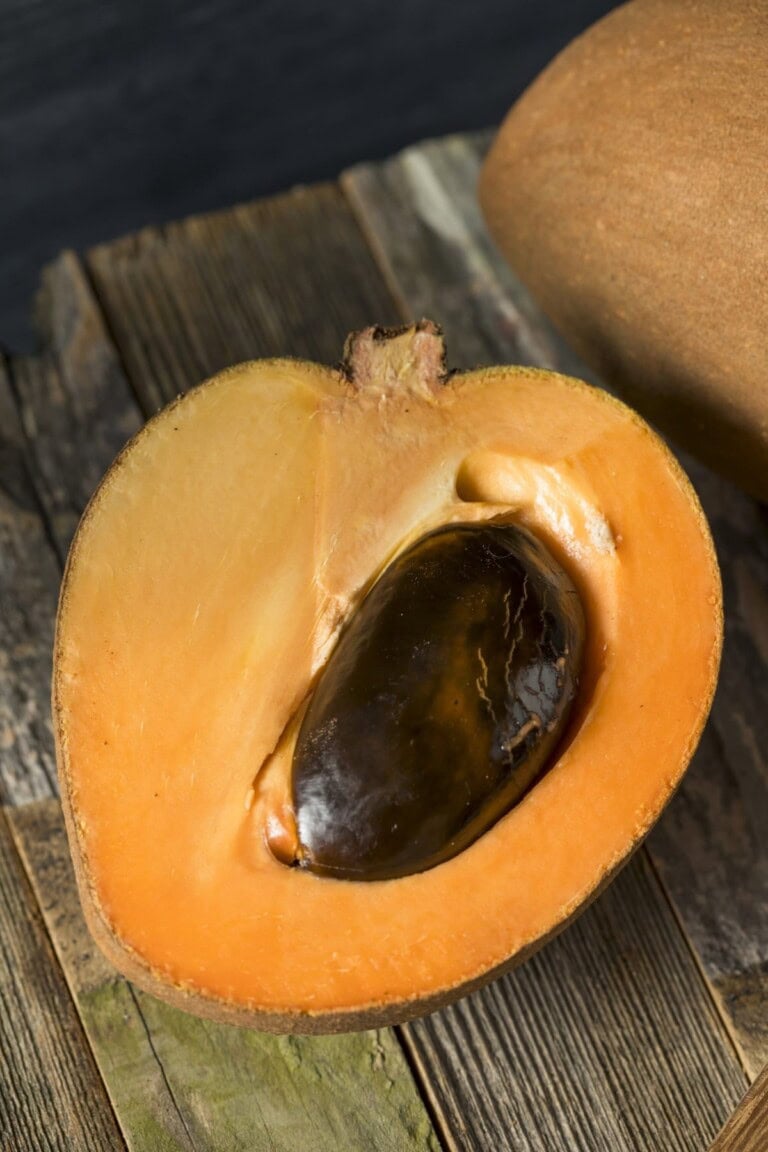Best Fall Fruits to Eat and Their Benefits
As the weather begins to cool down and the leaves start to change color, we know that fall is on its way. This means that it’s time to enjoy some of the best fall fruits! From apples and pears to grapes and figs, there are so many delicious options to choose from.
Fall is the perfect time to indulge in some of the best seasonal fruits. Although there are many fruits that are available year-round, picking up local produce is not only supporting your community but is usually better quality than imported fruit.
See Best Fall Vegetables and Benefits Of A Community Garden
Read on to find out what fall fruit you should be eating this season and how it will make your body more healthy!
Best Fall Fruits To Consume
1. Apples
Late summer through late fall

Fall is the perfect time to stock up on fresh apples. There are so many different types of apples to choose from, so you can always find the perfect one for your needs. From tart Granny Smith apples to sweet Honeycrisp apples, there’s an apple out there for everyone.
Apples are a great source of fiber, vitamins, and antioxidants. They can help improve your cardiovascular health, lower your cholesterol levels, and boost your immune system. Plus, they’re just plain delicious. So make sure to add some apples to your shopping list this fall!
When choosing an apple, look for one that is firm and has a bright color. Avoid apples that have bruises or blemishes. Store apples in a cool, dry place. To keep apples fresh for longer periods of time, store them in the refrigerator.
2. Figs
Late fall

Figs are a popular fruit that is often associated with the fall. There are many different types of figs, but the most common type in the United States is the Mission fig. So you’re more likely to get these in the grocery store.
Figs are a good source of fiber and contain vitamins A and C. They can be eaten fresh, dried, or canned.
When choosing fresh figs, look for plump ones with a uniform color. Avoid figs that are bruised or have blemishes. Figs are so delicate, but fresh figs can be stored in the refrigerator for up to a week.
Dried figs are a good option if you want to enjoy figs year-round. Dried figs can be found in the grocery store near other dried fruits, such as raisins and apricots. You can store dried figs in an airtight container at room temperature for up to six months
3. Cranberries
Mid –to-late fall

Cranberries are a type of fruit that is typically harvested in the fall. They are bright red in color with a tart taste, which makes them a popular ingredient in many fall recipes.
Cranberries can be eaten fresh or cooked into sauces, pies, and other desserts.
Cranberries are a good source of vitamins C and E and contain fiber and antioxidants. These nutrients can help boost your immune system, protect your cells from damage, and keep your digestion regular.
4. Kumquats
Mid-to-late fall
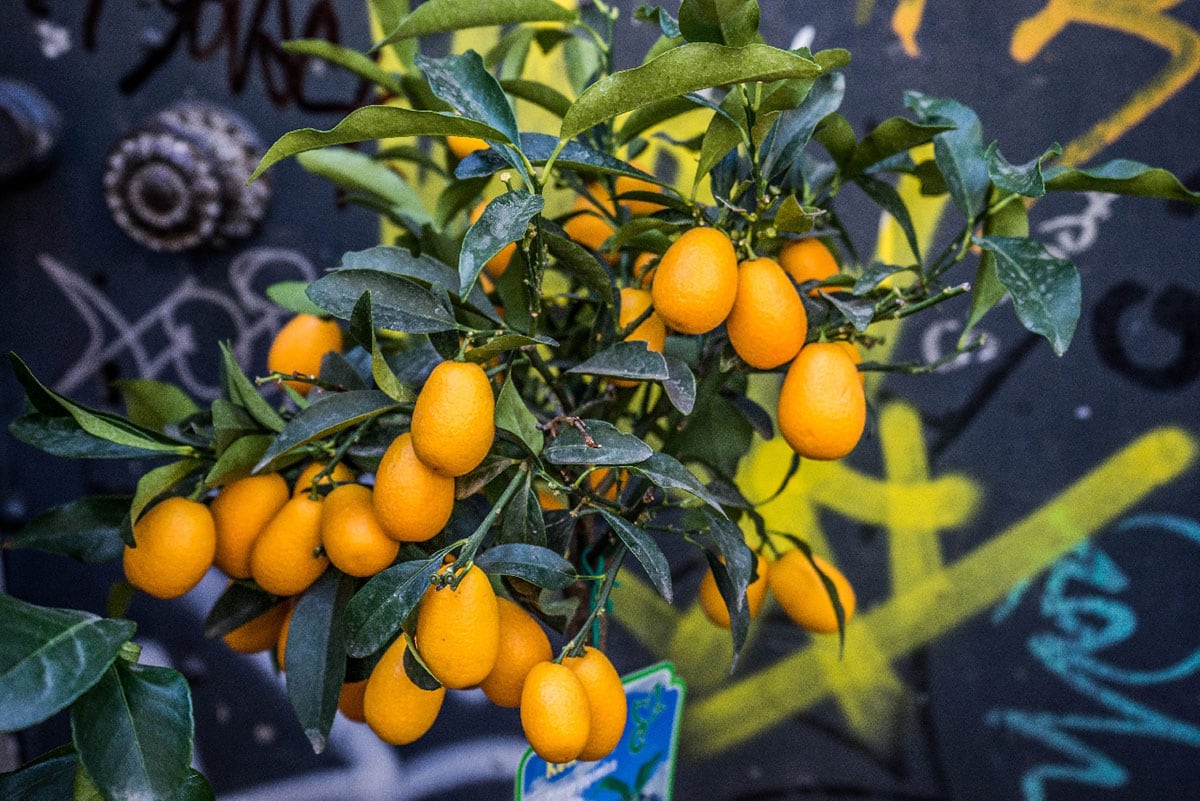
Kumquats are small and oval orange or yellow citrus fruits, and a member of the Rutaceae family, which includes other citrus fruits like oranges, lemons, and grapefruits. They are native to Asia and have been cultivated in China for centuries.
Kumquats can be eaten whole, including the skin and seeds (some people may remove the seeds).
The skin is where most of the fruit’s flavor resides. To eat a kumquat, simply bite into it like you would an olive. The flesh of the kumquat is sweet with a sour aftertaste.
Kumquats are an excellent source of vitamins A and C, as well as potassium and fiber. They also contain antioxidants and phytochemicals that may boost immunity and protect against disease. In addition, kumquats are low in calories and have a high water content, making them a healthy snack option.
There are many ways to enjoy kumquats. They can be eaten whole or used in jams, jellies, or marmalades. Kumquats can also be candied or made into syrup.
5. Grapes
Late summer through early fall

Grapes are a common fall fruit. They can be eaten fresh, made into juice, or dried and used as raisins.
Grapes are a good source of vitamins A, C, and K, fiber, and antioxidants. They can help improve heart health, cognitive function, and digestion.
Eating grapes is a great way to enjoy the taste of fall. You can add them to salads, use them in various recipes or eat them on their own as a healthy snack.
6. Persimmons
Late fall
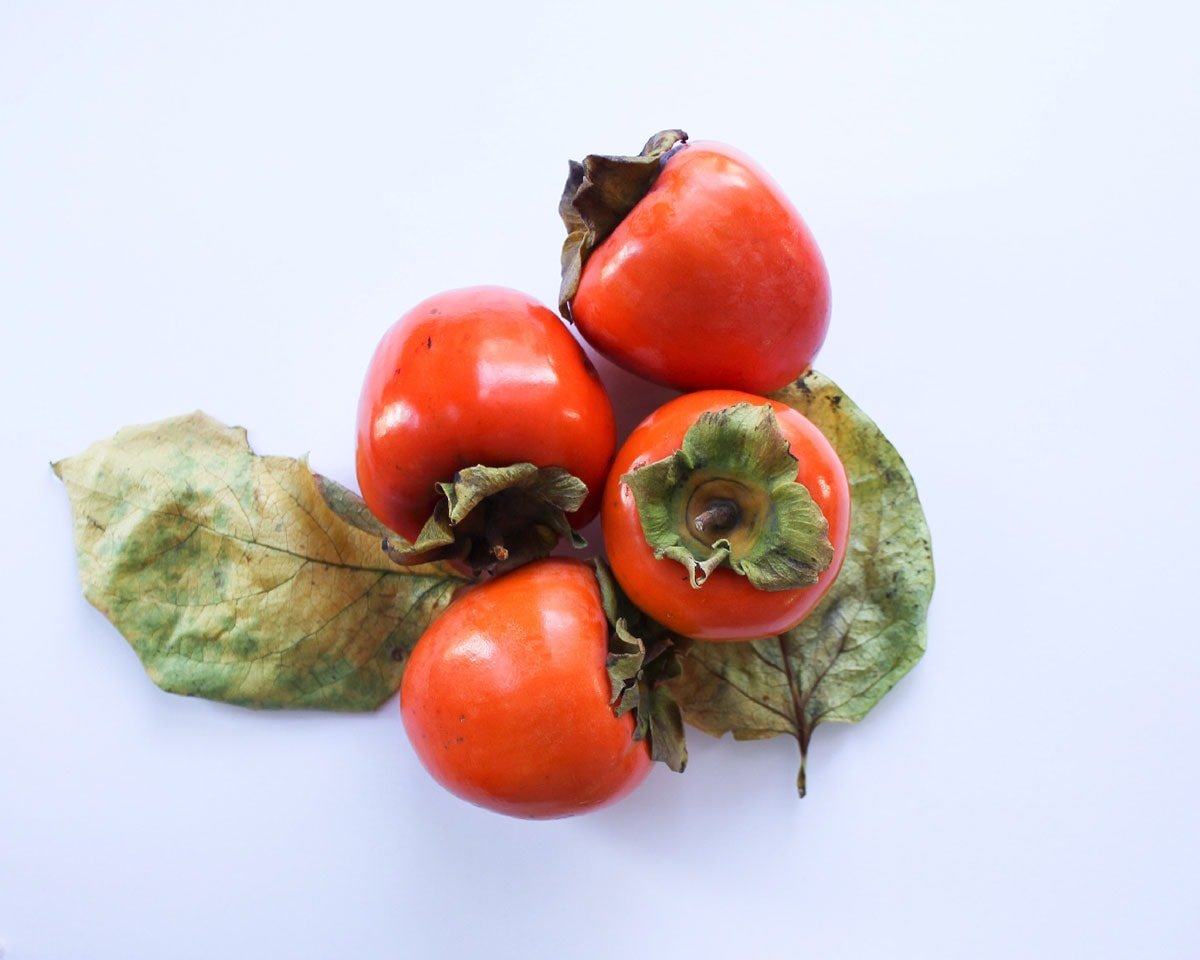
Persimmons are oblong or round fruits that can range in color from yellow to orange to red. They have thin and soft flesh that is sweet and slightly tangy.
There are various types of persimmons, including American and Asian. The American persimmon is native to the eastern United States, and the Asian persimmon is native to China.
Persimmons are further classified into astringent and non-astringent. Astringent persimmons contain tannins, which make them taste bitter unless they are very ripe. Non-astringent persimmons do not contain tannins and can be eaten when they are firm.
How can you differentiate the two? Astringent persimmons are heart-shaped, while non-astringent ones are tomato-shaped.
Persimmons are a good source of fiber, vitamins C and A, potassium, and carotenoids. They also contain phytochemicals, such as polyphenols and flavonoids.
The health benefits of persimmons include improving digestive health, lowering cholesterol levels, boosting immunity, controlling diabetes, aiding in weight loss, and preventing cancer.
They can be eaten fresh, dried, or cooked.
Fresh persimmons can be eaten out of hand or used in recipes such as pies, cakes, jams, and sauces. Dried persimmons are often used in baking or made into tea.
Persimmon pudding is a popular dessert made with cooked persimmons.
7. Pomegranates
Mid-to-late fall

Pomegranates have been around for centuries and have been mentioned in many different cultures. This fruit is not only delicious but also packed with various nutrients, including fiber, vitamins C and K, and antioxidants which help protect cells from damage.
Likewise, pomegranates may have several heart-related benefits. For example, they can help lower blood pressure and improve cholesterol levels. Plus, pomegranate juice has been linked to reduced inflammation and improved blood flow to the heart.
Pomegranates have anti-inflammatory properties that may help relieve arthritis pain. In one study, people with osteoarthritis who drank pomegranate juice daily for three months had less pain and stiffness than those who didn’t drink the juice.
Pomegranates may also promote brain health. One small study found that drinking pomegranate juice improved memory in older adults with mild memory problems.
8. Pears
Throughout fall

Pears are not only a delicious and juicy fall fruit, but they are also packed with nutrients that are beneficial for your health.
Just one pear contains over 15% of the daily recommended amount of fiber, which is important for keeping your digestive system healthy. Pears are also a good source of vitamins C and K, as well as copper and potassium.
Eating pears regularly can help to lower your risk of heart disease, stroke, and other chronic conditions like obesity and type 2 diabetes. Pears are also thought to have anti-inflammatory properties that can help to reduce the symptoms of arthritis.
So, if you’re looking for healthy fruit to add to your diet this fall, be sure to pick up some pears!
9. Passion fruit
Early-to-mid fall
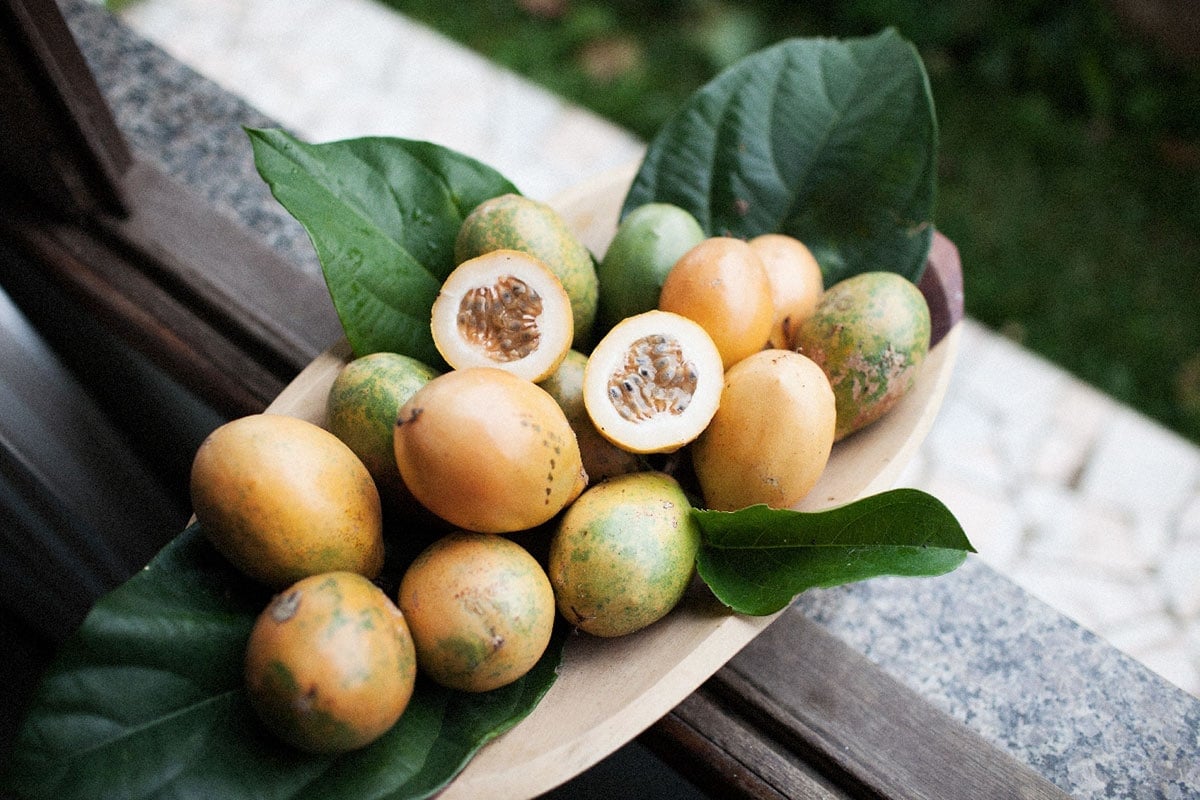
Passion fruit is a tropical fruit rich in vitamins, minerals, and antioxidants. Its benefits include aiding weight loss, improving heart health, and reducing the risk of cancer.
Passion fruit is also a good source of fiber, which can help regulate digestion and prevent constipation. Additionally, passion fruit has anti-inflammatory properties that can help to reduce the symptoms of arthritis and other inflammatory conditions.
How To Pick Ripe Passion Fruits
Picking ripe passion fruits can be a little tricky, but with a few simple tips, you’ll be an expert in no time! Here are a few things to look for when picking passion fruits:
- Look for a passion fruit that is dark in color and has soft, wrinkled skin.
- Feel the weight. The fruit should be heavy for its size. This indicates that it is full of juice and ready to eat!
- Gently squeeze the fruit to see if it yields to pressure. If it doesn’t, it’s not yet ripe.
- Smell the passion fruit. Ripe passion fruits have a strong, floral aroma. If it doesn’t smell strongly of flowers, it’s not yet ripe.
- Finally, give the passion fruit a gentle tap with your finger. Ripe passion fruit will sound hollow when tapped.
Passion fruit can be enjoyed in a variety of ways:
- Cut passion fruit in half and scoop out the pulp with a spoon. Enjoy as is, or add to yogurt, smoothies, or ice cream.
- Add passion fruit pulp to cocktails or mocktails for a refreshing and exotic twist.
- Bake with passion fruit! Add the pulp to pies, tarts, muffins, or other baked goods for a unique flavor.
10. Quinces
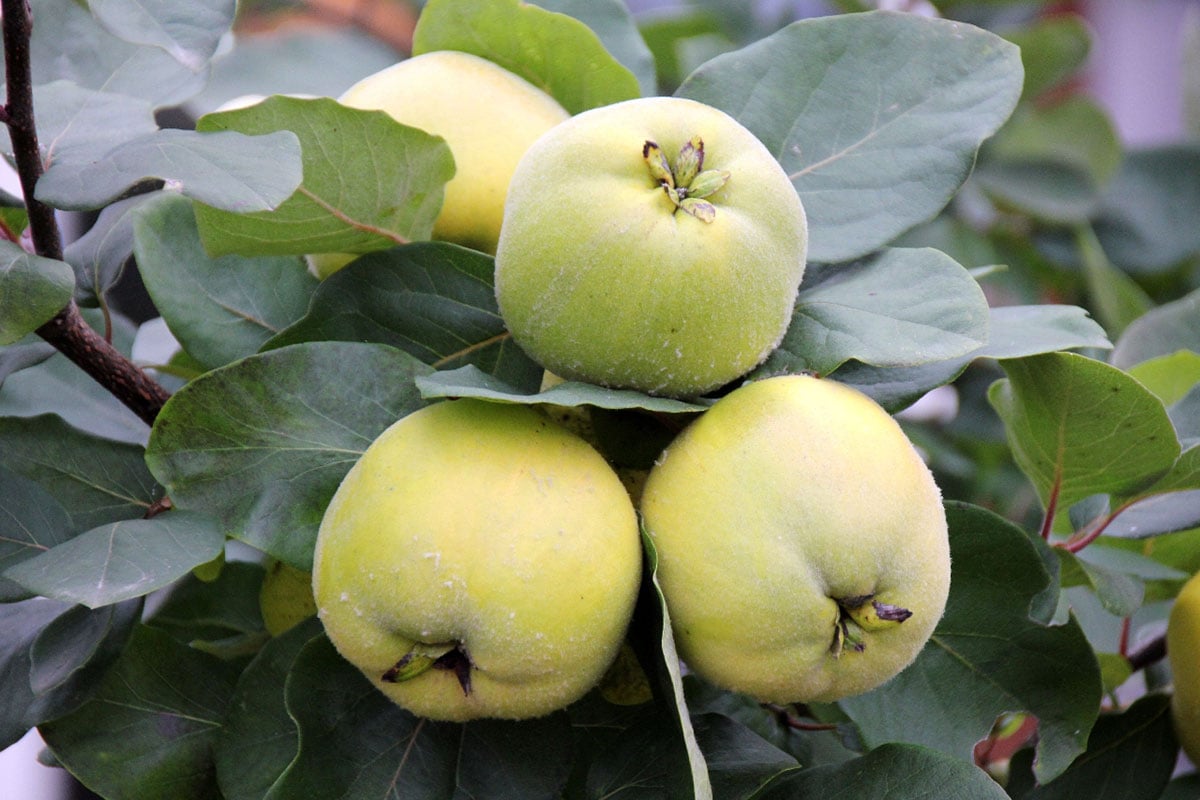
A member of the rose family, quinces are related to apples and pears. They’re native to Asia where they have been cultivated for centuries. Today, they’re grown in many parts of the world, including the United States, Europe, and South America.
The quince is a firm fruit with thick skin. It’s yellowish-green in color and has a shape that’s somewhere between an apple and a pear. The flesh of the quince is white or pale yellow and very dense. It has a high concentration of pectin, which makes it ideal for use in jams and jellies.
Quinces are usually too tart to eat raw, but they make excellently cooked dishes.
While quinces may not be as popular as other fruits, they offer a range of health benefits that make them worth eating. Here are some of the top quinces health benefits:
Quince is an excellent source of dietary fiber, vitamins C and K, copper, and a unique type of polyphenol called quercetin.
Quercetin has been shown to have numerous health benefits, including reducing inflammation, protecting against heart disease, and preventing cancer.
11. Guava
Late fall

Guava is a tropical fruit native to Mexico, Central America, and northern South America. The fruit is eaten fresh or made into juices, jams, and jellies. Guava leaves are used to make tea.
Guava is a good source of vitamins A and C, as well as dietary fiber. Vitamin C is an antioxidant that helps protect cells from damage. Also, it helps the body absorb iron from food. Dietary fiber helps promote regularity and may help lower cholesterol levels.
Along with that, guava contains a compound called lycopene. Lycopene is a type of antioxidant that has been linked with several health benefits, including reduced risk of heart disease and some types of cancer.
12. Key limes
Mid-to-late fall
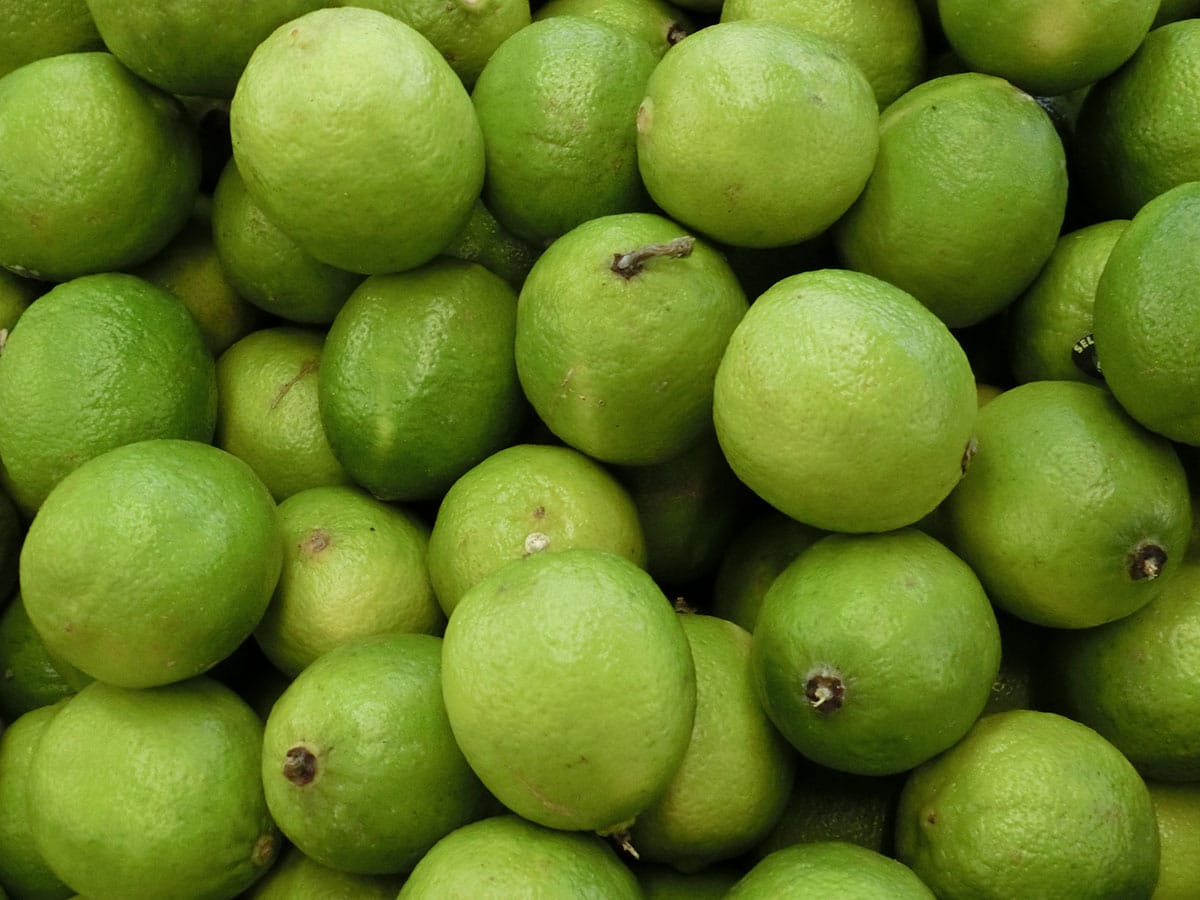
Key limes are a type of citrus fruit that is native to the tropical regions of Asia and Africa. The fruits are small and oval-shaped, with a yellow-green color when ripe. They have a sour and acidic taste with a strong aroma.
The most common use for key limes is in pies and other desserts. The acidity of the fruit helps to balance the sweetness of the other ingredients. Key lime pie is a popular dessert in the United States, especially in Florida, where the fruit is grown.
Other uses for key limes include adding them to cocktails or using the juice as a marinade. The zest of the skin can also be used to flavor various dishes.
In addition to their culinary uses, key limes have also been used medicinally. The juice of the fruit has been used to treat indigestion and nausea. The oil from the peel has been used as an insect repellent and to treat skin conditions such as acne.
Final Thoughts
Fall is the perfect time to enjoy all the delicious fruits that are in season.
From apples and pears to grapes and key limes, there are so many great options to choose from.
Not only do these fruits taste great, but they also offer a variety of health benefits.
So, next time you’re at the grocery store, be sure to pick up some of these fall fruits and enjoy their deliciousness and health benefits all season long!
Other Related Benefits
If you enjoyed this post about Best Fall Fruits to Eat and Their Benefits and would love to see more, join me on Youtube, Instagram, Facebook & Twitter!
Get discounted copies of my cookbook here.
Fortunately, because of the ads on our website, readers and subscribers of Healthier Steps are sponsoring many underprivileged families.



